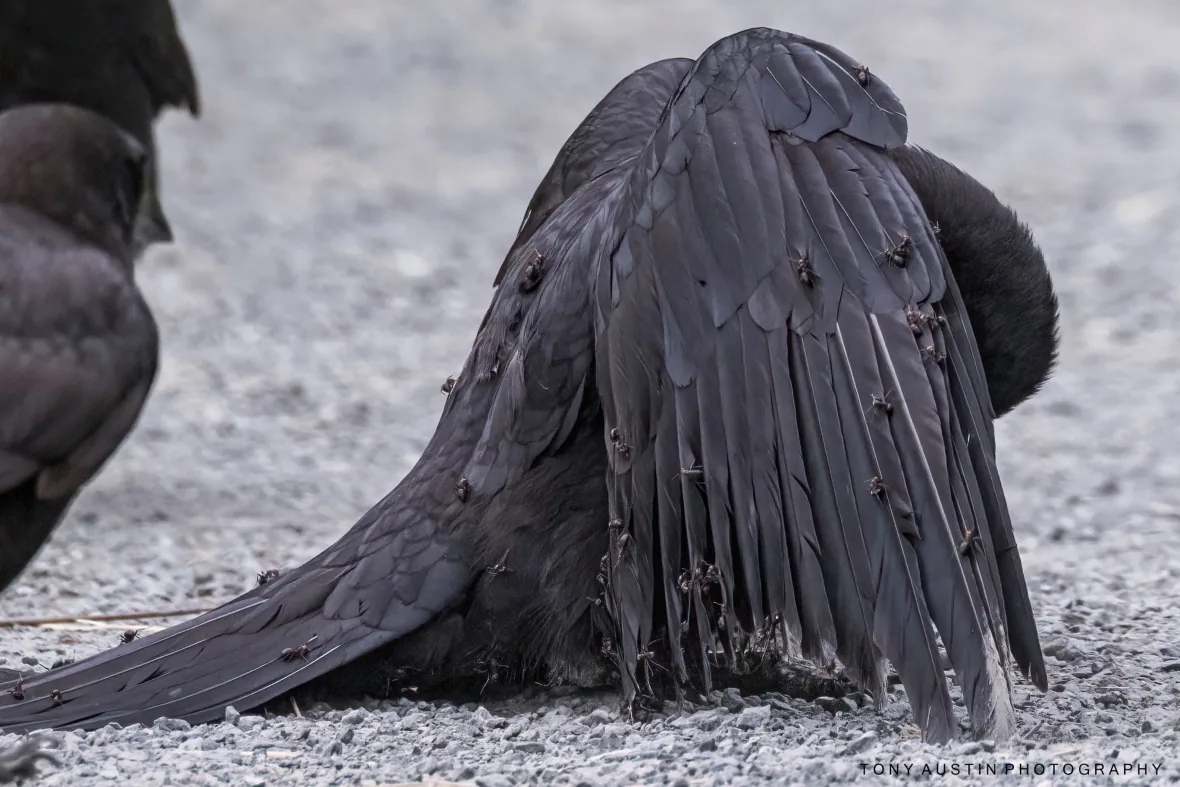Tony Austin, a Canadian photographer, unintentionally captured the unusual crow activity known as “anting.” Nevertheless, he became aware of it when his pictures became viral.

Numerous ants have taken over the body of the crow, which is sitting on gravel in the well-known video.
In the 1830s, this behavior was initially observed in turkeys.
That day, Tony was in the Swan Lake Nature Reserve in Victoria when a massacre of crows descended upon him.
One bird appeared to be bathing in dust. But there was something strange about the way she behaved; she acted a little crazy and lowered her wings on the ground.

After making a leap into the air, the crow returned to the dirt path. I thought his behavior was weird. The photographer comments, “I thought maybe he was in trouble, but none of the other crows seemed bothered, and after a minute or two they all flew and landed in some trees.”
Austin squatted to capture a couple up-close pictures. When he got home, he enlarged the picture on the monitor and saw that the crow had ants crawling on it.
And he only understood how much he had managed to photograph when he posted pictures on Facebook. As it happened, scientists discovered that this phenomenon—known as “anting”—is incredibly uncommon and puzzling.

In the middle of the 1800s, this behavior in turkeys was first documented.
Experts have since been unable to pinpoint the precise reason behind the birds’ actions.
A commonly held belief, according to the National Australian Federation, is that during times of severe feather shedding, birds apply ants to calm injured skin.
According to a different notion, ants assist in managing parasites that reside in the feathers of birds.
David Bird, an emeritus professor of animal biology at McGill University, contends that insects can potentially be used as food in the meanwhile. Scientists haven’t made any firm conclusions yet, though.

For Austin, though, the pictures’ success came as a welcome surprise.
“My love has always been photographing pictures, and I have done it for my whole life. It’s wonderful to be able to inform so many people about this little-known and even less-understood habit. He continued, “I also want to express my sincere gratitude to this crow and his friends for providing me with an experience I will never forget.






